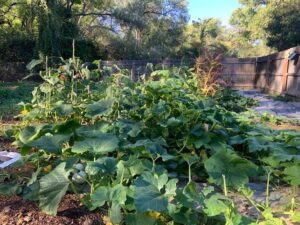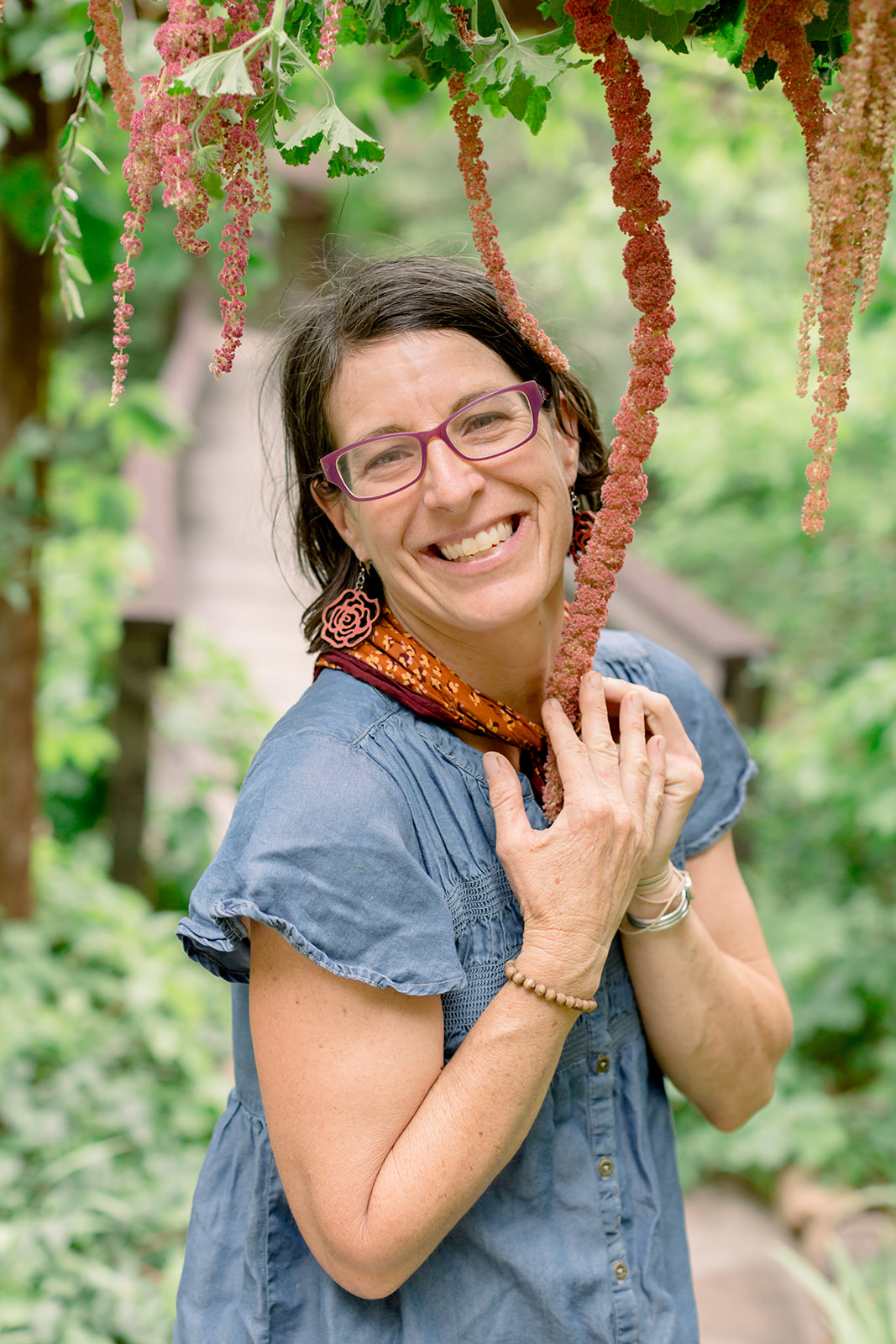Seeds are tiny miracles. I never tire of witnessing them burst from the soil — full of purpose. Our monsoon pumpkin patch grew fast and furious in the long, rainy and humid summer days. When I survey the tangle of vines bearing pumpkins — some over 20 feet long — it seems impossible that they were once tucked inside a teardrop-shaped seed smaller than a dime. They grow infinitely, tendrils grabbing onto anything they can find to get closer to the sun. I am stumped by a mystery pumpkin that does not resemble any of the seed packets in my collection. A single plant made a dozen giant pumpkins, each one its own work of art, in subtle shades of beige and blush, like the glow of the fading autumn sunset.
Digging through my seed cache, I found a brown packet folded into a triangle with a hand drawn pumpkin labeled dessert pumpkin. I remembered getting this gift several years ago at a seed swap. We crowded inside a farm yurt where a friend was living in exchange for work trade. The winter squash outnumbered the women — giant Hopi curshaws curing on the shelves amidst my friend’s winter sweaters and pantry supplies. Perhaps this could be the origin of the mystery pumpkin?
Pollination requires timing and precision almost as if someone is calling out stage directions: Places everyone! Stigma receptive? Ready for pollen? Anthers loaded? On a single plant, pumpkins have individual flowers that produce pollen and others that have an ovary and produce eggs that must be fertilized to make seeds. This is why we need the bees or Q-tips. The flowers are only open for one day and if they are not fertilized they shrivel and do not make a pumpkin.
As a farmer, I have experimented with seed saving and had some wins and losses. In the process, I marvel at the specificity of each flower anatomy and reproductive strategy. I honor the trials that generations of growers employed and carried forward to build the foundation of knowledge where I now dwell. You can appreciate this in the colorful pages of seed catalogs; the years of breeding to select for qualities like double blooms, taste, and resistance to disease.
Seed saving also requires precision and patience. If you want the varieties to remain true, you have to isolate the plants and insure they cross pollinate with another variety. This is why the squash that sprout from the compost pile resemble distant cousins of last year’s and may not taste the same, as they were “promiscuous,” and now carry traits from other squash growing nearby.
Seed savers keep the stories and traditions alive, and some heirloom varieties can be traced back to a region, family or timeframe. I was touched when Ruben, who helped me build a fence to protect the garden from javelina, gave me squash seeds from his village in Chiapas, Mexico to grow. He has been in the U.S. for 10 years and has never been able to return to his homeland. The seeds hold the memory and food traditions of home. When we save seeds in our garden they preserve the potency of place in their DNA.
For me, saving seeds is an act of rebellion, of resistance and resilience. Many seeds on the market today are F1 hybrids; the result of selective breeding from different parent plants in order to create offspring with those characteristics. They have a place in my garden because of their productivity, desired characteristics, and reliability to variety. However, F1 hybrids are either sterile or the seed will not breed true. We must buy the seed again the next year, and the company that bred them owns the patent on that seed and the profit.
Many gardeners panicked in spring 2020 when the pandemic impacted supply chains and seed companies were overwhelmed and delayed. This is why I always grow some open-pollinated varieties, where pollination occurs by natural mechanisms such as insect, bird, wind and humans. With pollen freely flowing between individuals, open-pollinated plants are also more genetically diverse. Each season, this variation within plant populations allows plants to adapt to local growing conditions and climate. The tulsi basil seeds from a Sedona gardener grow stronger and bloom earlier than any I can buy from the seed companies. When we let our gardens go to seed, the plants sow themselves, and decide when conditions are right to emerge in the spring.
Last weekend our Rimrock library hosted a seed swap. In the room of about 10 people, there was a range of seed saving experience from novice to professional seed savers for market. A man who once owned a plant nursery is now intent on propagating wild milkweed from seed he collected locally. A newcomer brought bags of marigold seed to share, the only thing she could grow in her garden the first summer here. A basket maker who travels with hand pruners in her car, shared seeds from a bouquet of garlic chives and wild grasses arranged in ceramic vase. The librarian had Mexican hat sunflowers she collected from the side of the road in old prescription bottles. A man who just moved from Oregon literally arrived with a truckload of winter squash and pumpkins he grew for seed, carefully isolating the varieties so we can enjoy eating the squash this year and for several to come.
I brought Hopi black dye sunflower heads still drying in a big basket, as they have probably been grown around Montezuma Well for a very long time. Our seeds connect us to one another and our particular place, which is not an easy place to adapt and grow. In this way we tether ourselves to the fate of plants, we dance with the pollen flow, the bees, the wind and grow stronger together.


